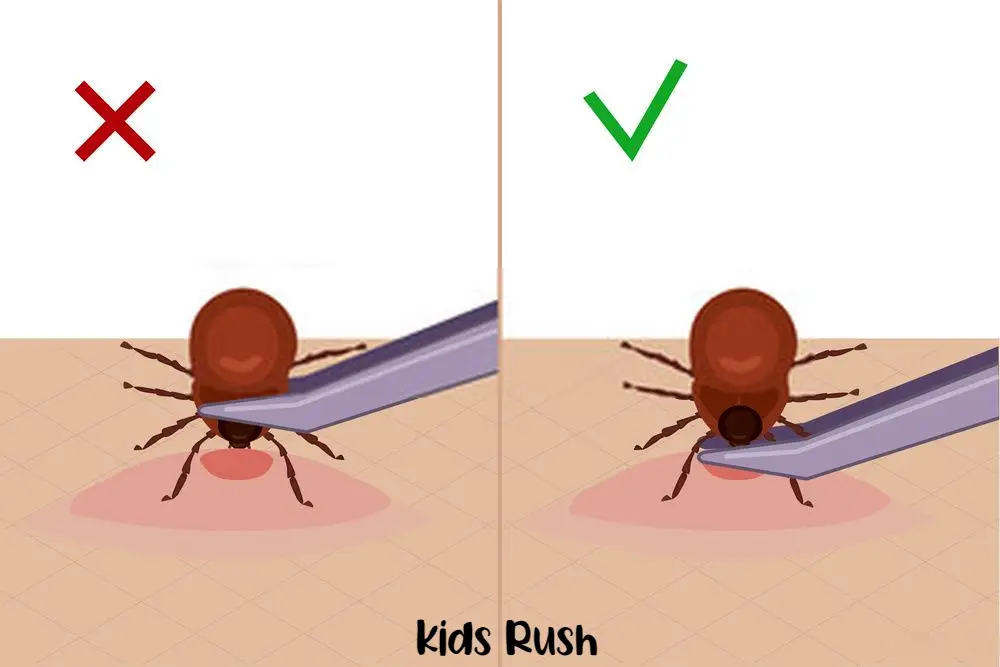Kids spend a lot of time outside during the summer. Additionally, it can mean you’ll be bitten by bugs. People of any age find ticks on their skin during the warmer months as biting insects are common in many areas.
Your child might be concerned about the health effects of a tick if you see one on them. Ticks can usually be removed at home without any harm to your child. It is important to know what symptoms to look for after a tick bite because there is a small chance of contracting a tick-borne disease.
Ticks: What Are They?
Mammal blood is what ticks feed on. To feed, they bite into skin and burrow into it. Unless you’re looking for ticks on your body, their bites are usually painless. Depending on how big they are, some are as small as a poppy seed, while others are closer to the size of pencil erasers. When left unattended, ticks will feed on their host for 3 to 6 days before dropping off.
Ticks are found all over the world, and there are hundreds of different types. The season for ticks in North America runs from May to October. Regardless of the time of year, a tick bite is possible.
Related: Chigger Bites In Children: Prevention and Treatment
What Is the Best Way to Remove a Tick?
You must remove a tick as soon as you find it on your child:
- As close as possible to the skin, grasp the tick with tweezers.
- Take the tick out by pulling it straight upwards without twisting.
- Placing the tick in a plastic bag or other sealed containers will prevent it from spreading.
- Warm soap and water should be used to clean the bite area.
- Call your child’s doctor as soon as the tick has been removed. Depending on what they find, they may want to see your child or give you instructions over the phone regarding further care.
You can bring the tick to your doctor if you keep it in a bag after you remove it from your child. Ticks can be classified based on their characteristics. If you know what kind of tick bit your child, you will know what to look for afterward. Depending on the tick, you can even send it to a laboratory for testing.
Tick bites: Are they dangerous?
An ordinary tick is unlikely to cause serious problems most of the time. Bite sites are not painful, and the ticks typically leave a harmless red spot after you remove them.
Occasionally, people can react to tick bites if they are allergic to them. Any time your child exhibits any of these symptoms, call your doctor.
The following diseases can be carried by ticks and transmitted to humans:
- Lyme disease
- Rocky Mountain Spotted Fever
- Colorado Tick Fever
- Anaplasmosis
- Tularemia
United States residents are most likely to contract Lyme disease from ticks. A majority of cases are found in the Northeast, Pacific Coast, and Upper Midwest, where the deer tick carries Lyme disease. Deer ticks are very unlikely to transmit Lyme disease to your child, even if they bite them. Lyme disease bacteria can only be transmitted by ticks that have been attached to a human for 36 to 48 hours.
When a tick bites my child, what should I look for?
Once the tick is removed, it is important to look for any signs of disease or reaction post-tick bite. Please notify your doctor of any of these symptoms as soon as possible:
- After the bite, the skin develops a rash that can last from two to fourteen days
- Symptoms begin two to fourteen days after a bite: fever or headache
- As you age, your skin becomes redder and swollen
- A droopy face or weak eyelids might indicate a tick bite.
An individual with a red ring or bull’s-eye rash 3 to 30 days after the bite should be on the lookout for this. Lyme disease is characterized by a rash like this. You should discuss what it might look like for your child with your doctor if he or she has dark skin tones.
Related: West Nile Virus in Children: Causes, Symptoms, and Treatment
Is it Possible to Prevent Tick Bites?
By spraying insect repellent on your child’s body and clothing, you can keep them protected from ticks. A good spray can be recommended by your doctor. In addition, make sure your child wears tight-fitting clothing, such as socks and a hat, to prevent ticks from attaching to their skin.
Make sure your child is tick-free after playing outside. Take special care of the skin behind their ears and under their arms, as well as the scalp, elbows, and knees.

